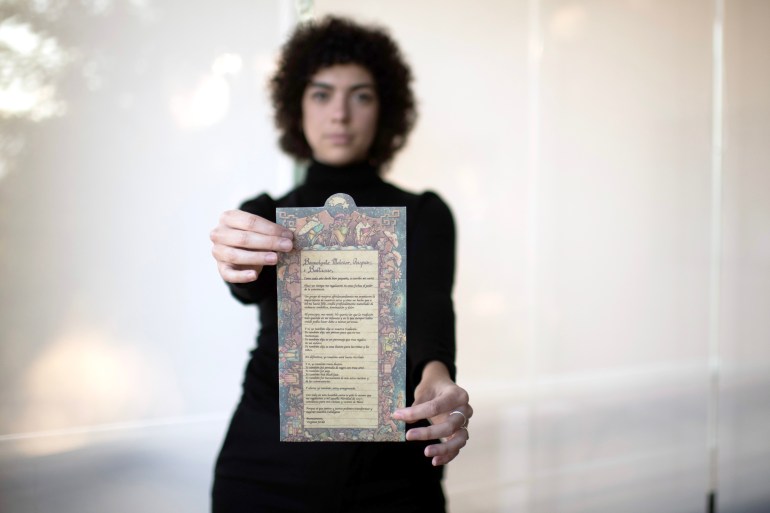Despite outcry, Christmas blackface parade celebrated in Spain
Calls are growing for the use of blackface characters in Alcoy’s Three Kings Parade to be abandoned.
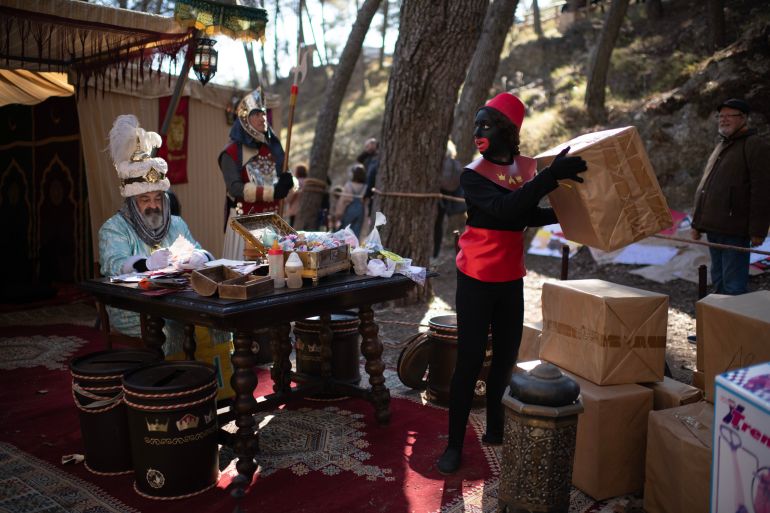
Alcoy, Spain – Despite years of condemnation, Spain’s Three Kings Parade has gone ahead in a small eastern city with a Balthazar character and an army of pageboys in blackface.
About 300 people in Alcoy near Alicante painted their faces on Thursday for the parade, which is held to present children with Christmas gifts.
Keep reading
list of 4 itemsGermany is targeting post-colonial thinkers for a reason
Why the West hesitates to condemn racism
UK royal family staff member quits after racist comments
Many celebrated nonchalantly, ignoring calls from anti-racist organisations to stop the tradition.
Ceremonies in Valencia and Igualada in Catalonia were also said to have had a blackface Balthazar and his helpers.
The activist group Afroféminas has been calling for an end to the practice since 2017, when an Alcoy City Council poster featured a blackface pageboy to push for the parade to be protected by UNESCO heritage status.
At first Virginia Jorda, an artist from Alcoy, a city of 60,000, could not understand the criticism.
“I didn’t see it,” she told Al Jazeera. “[I thought] it’s our tradition. It’s not racism. They are not slaves. My grandfather, my father and I have been pages in the parade.”
But after researching and listening to voices outside her community, her views evolved.
“I can no longer participate in the parade nor go to see it nor take part because I consider it inappropriate,” she said.
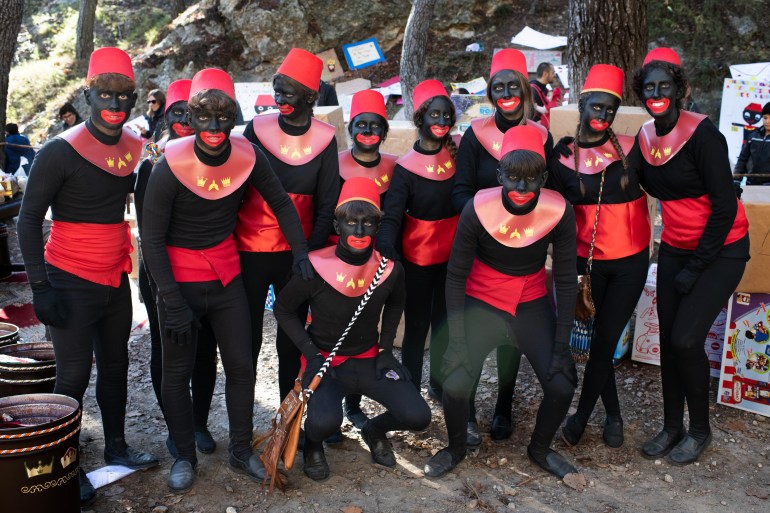
In Spain, the “three magic kings”, or wise men, bring presents to children on the night of January 5, and parades are held across the country.
Balthazar, the biblical king who is said to have given the gift of myrrh to the baby Jesus, was Black or Middle Eastern, according to written descriptions, art and in the imagination of the Western church.
He was often represented by people who painted their faces brown or black, but this practice has died out in most of Spain.
In Alcoy, however, hundreds of young people still wear the makeup. They collect children’s letters with Christmas wish lists, and the following day, blackface pageboys – helpers of the king – deliver gifts by climbing into houses with red ladders through the windows.
“We know that historically this is wrong, but at first, people refused to understand it,” Afroféminas founder Antoinette Torres told Al Jazeera.
Her group argues that the tradition perpetuates dehumanising stereotypes and responds to a painful history that has not been acknowledged by Spain.
Jorda said few people in Alcoy have changed their minds like her.
Those who have “tend not to express it publicly for fear of family pressure and social alienation”, she said, adding that talking about the parade’s racist overtones is “taboo”.
“So far, I haven’t managed to open the debate in my community.” she said.
At the political level, all parties that are active in Alcoy support the parade and, facing criticism, quickly secured 10,000 signatures in favour of preserving the tradition.
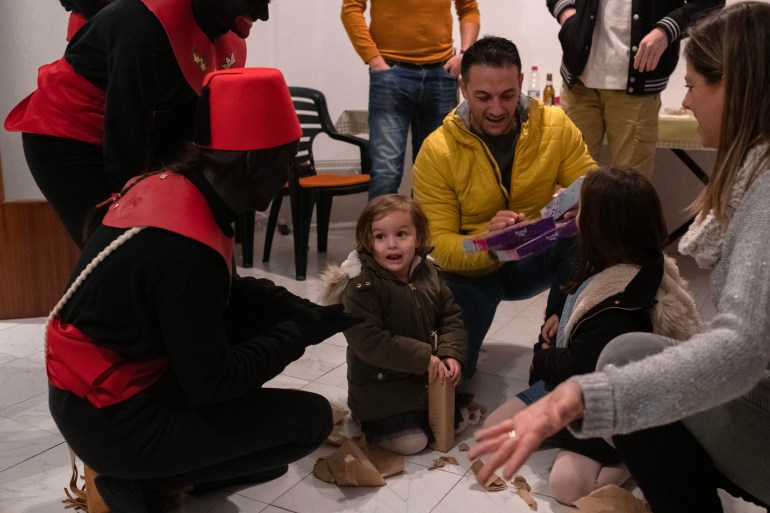
Deputy Mayor Jordi Valentí, a socialist, told Al Jazeera that young people here feel honoured to be a pageboy or girl.
“It has no racist or slave component,” he said. “On the contrary, it is the most magical character. What’s more, all the children prefer to give their letter to King Balthazar.”
“When people come and get to know the festival, they see that there are no bad intentions,” the deputy mayor said. “What there is, is the great emotion of the whole town, the illusion. I don’t think anyone who sees it would think that this is degrading.”
But Spanish historian Antumi Toasijé disagreed, saying the parade’s origins were formed in the 19th century when people from Alcoy migrated to Cuba, then a slave colony, and participated in the Atlantic slave trade.
“The Spaniards went to the Americas to make their fortune, and when they come back, the parade began to take place,” Toasijé said. “Local newspapers at the time talked about the fact that the pageboys in the cavalcade who carry the toys to the children represent slaves. Body painting is an insult. It had no reason to be at that time and even less so today.”
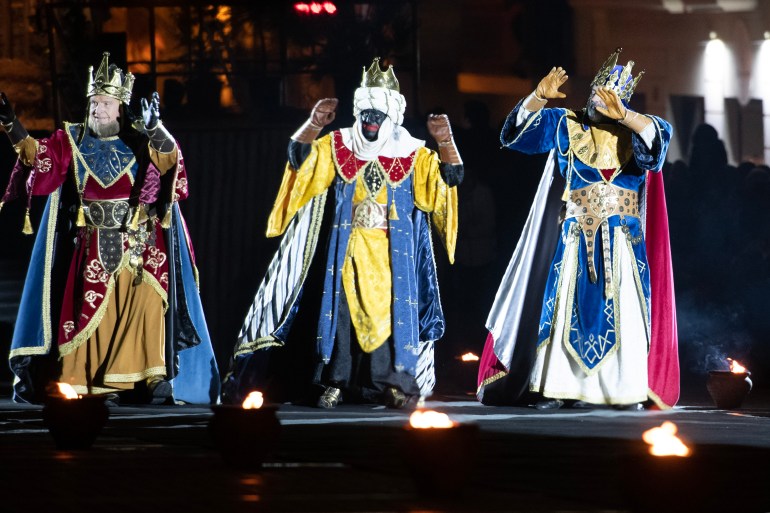
In a room in Alcoy’s town hall decorated with blackface pageboy dolls, Valentí continued to justify the parade.
“Many people come from all over the country to see it,” he said. “We want to preserve a tradition that has been going on for 135 years.”
Alcoy local Ana, whose souvenir shop stocks pageboy lighters, magnets, hats, posters and dolls, said: “When you explain it to the tourists, they understand it without any problem. It’s something nice about the town.”
She claimed that the controversy has fuelled sales of goods featuring the pageboys.
On the streets of Alcoy during the parade, as folksy local music rang out, a twentysomething said: “I don’t think we offend anyone.”
His friend chimed in: “It’s a bit racist, but it’s our tradition.”
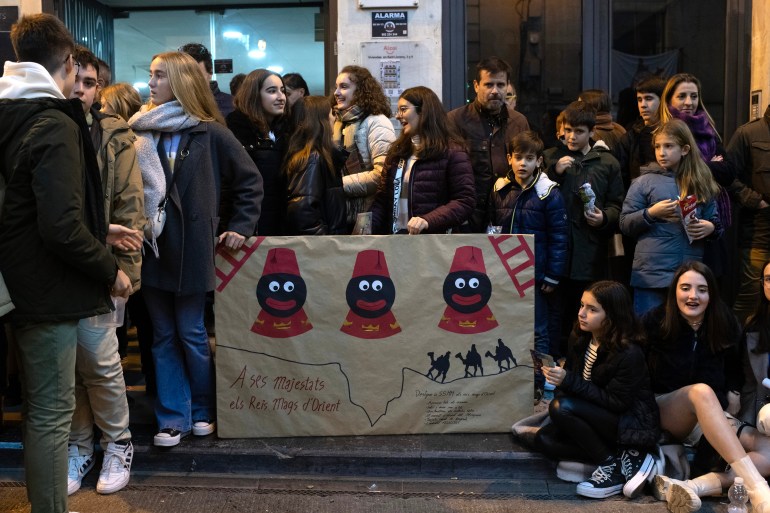
A former pagegirl seemed oblivious to the controversy, saying, “For me, the highlight was the children’s faces, their excitement when they see us. They don’t recognise you.”
But Spain is not the only European nation with a blackface tradition.
In the Netherlands, the character Zwarte Piet, or Black Pete, stirs unease in December. Thousands dress up each year with blackface makeup and black curly wigs to portray this Santa’s helper despite widespread condemnation.
“When people are told that this behaviour is in fact racist, they insist on perpetuating it the name of tradition,” Toasijé said.
“Then they can no longer say that there is no malicious intent if they have already heard the complaint and they don’t want to listen,” the historian said.
Even so, Jorda hopes for a Christmas miracle.
She wrote the magic kings a letter this year, asking for “empathy so that the people of Alcoy can change these offensive traditions”.
